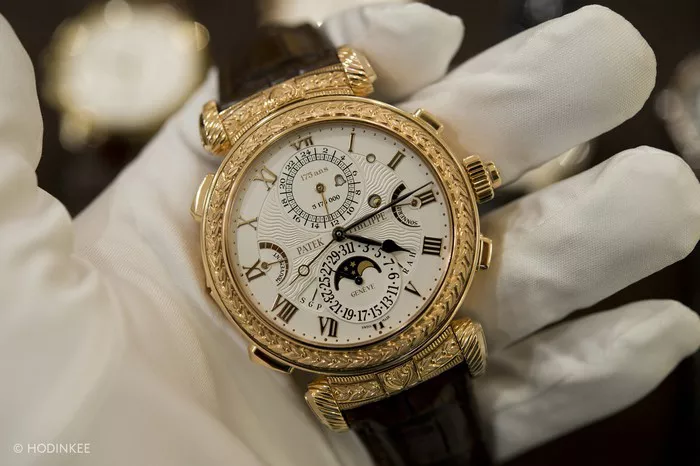Patek Philippe, synonymous with precision and elegance in the world of haute horlogerie, raises questions and admiration alike. Among the queries frequently posed is: Does Patek Philippe run on battery? In this exploration, we delve into the intricate mechanisms that power Patek Philippe watches, demystifying whether these timepieces rely on the simplicity of a battery or draw from the traditional artistry of mechanical movements.
The Essence of Patek Philippe Movements
1. Horological Heritage
At the core of Patek Philippe watches lies a commitment to traditional watchmaking craftsmanship. The brand proudly upholds the art of mechanical watchmaking, reflecting a dedication to heritage and precision that spans nearly two centuries.
2. Mechanical Movements: A Pinnacle of Craftsmanship
Patek Philippe watches predominantly feature mechanical movements, which are intricate assemblies of gears, springs, and jewels meticulously crafted to measure time with unparalleled accuracy. This choice reflects a commitment to the artistry of watchmaking that extends beyond mere timekeeping functionality.
Understanding Mechanical Movements
1. Kinetic Energy Drives Precision
Mechanical movements operate based on kinetic energy. As the wearer moves, the motion of the watch translates into energy that is harnessed by the mainspring. This energy is then released in a controlled manner, regulating the gears and hands of the watch to measure time.
2. The Role of the Mainspring and Escapement
Key components of mechanical movements include the mainspring and escapement. The mainspring stores energy when wound, while the escapement ensures that this energy is released in a controlled manner, allowing the watch to maintain accurate timekeeping.
Patek Philippe and Quartz Movements
1. Limited Presence of Quartz Movements
While Patek Philippe is celebrated for its commitment to mechanical movements, there are instances where quartz movements are utilized. However, these instances are relatively rare and typically found in specific models designed for practicality, precision, and a slimmer profile.
2. Calatrava Travel Time: An Example of Quartz Precision
The Patek Philippe Calatrava Travel Time, introduced in the 1990s, is an example where the brand incorporated a quartz movement. This model, designed for frequent travelers, offered the convenience of a quartz-powered dual time zone function while maintaining the brand’s commitment to quality.
The Power Reserve: Unveiling the Autonomy
1. Hand-Winding and Automatic Movements
Patek Philippe offers a range of movements, including hand-winding and automatic. Hand-winding watches require manual winding by turning the crown, while automatic watches harness the kinetic energy generated by the wearer’s movements to wind the mainspring automatically.
2. Power Reserve Indication
Many Patek Philippe watches feature a power reserve indication on the dial, providing wearers with information about the remaining energy in the mainspring. This feature enhances the user experience, allowing enthusiasts to gauge when their watch requires winding to maintain optimal accuracy.
The Craftsmanship Continuum: From Grand Complications to Classics
1. Grand Complications: Mechanical Marvels
Patek Philippe is renowned for its grand complications, representing the pinnacle of mechanical watchmaking. These intricate timepieces feature complex functions such as perpetual calendars, tourbillons, and minute repeaters, showcasing the brand’s mastery in creating mechanical marvels.
2. Classics and Everyday Elegance
In addition to grand complications, Patek Philippe produces classic models that embody everyday elegance. Whether adorned with simple three-hand configurations or additional complications, these watches exemplify the brand’s commitment to offering a diverse range of mechanical timepieces.
Conclusion: The Enduring Pulse of Patek Philippe
In conclusion, the heartbeat of Patek Philippe watches emanates from the traditional pulse of mechanical movements. While quartz movements find occasional application, the brand’s foundation lies in the intricate artistry of gears, springs, and meticulous craftsmanship. Patek Philippe watches are not powered by batteries but are a symphony of mechanical precision, ensuring that each tick of the hands resonates with the enduring legacy of horological excellence.
For enthusiasts and collectors, the choice of a Patek Philippe watch transcends mere timekeeping; it represents an investment in the timeless art of watchmaking. The heartbeat of Patek Philippe is a rhythmic dance of gears, a testament to the brand’s unwavering commitment to preserving horological heritage in every tick and tock.


